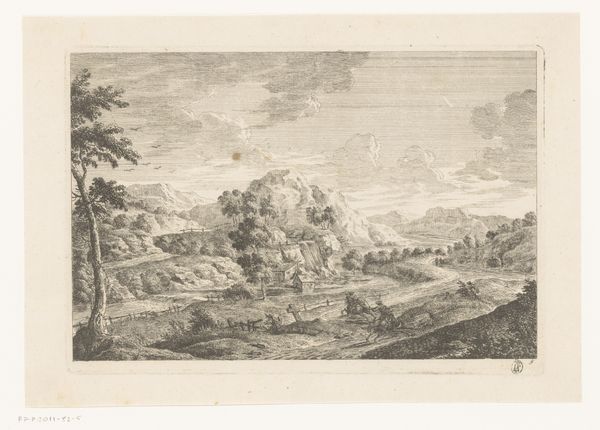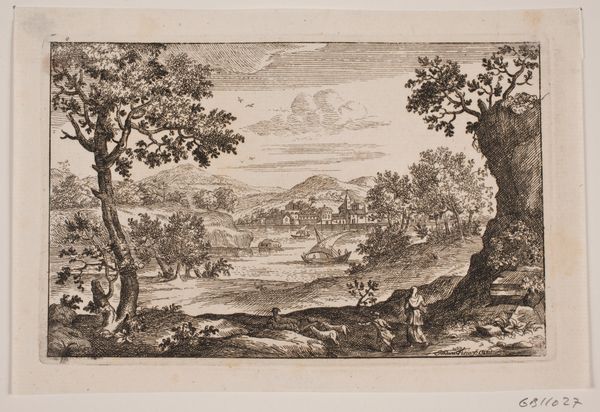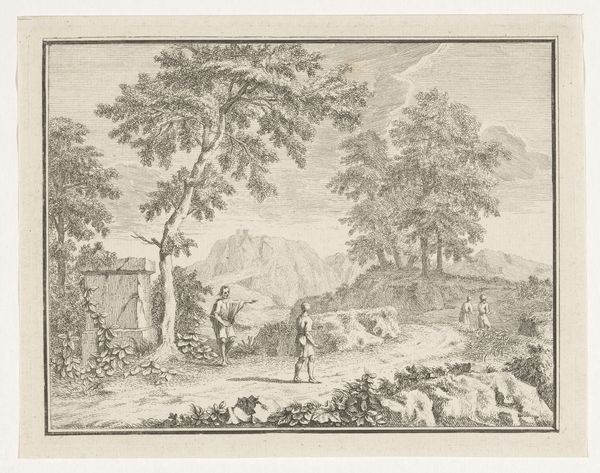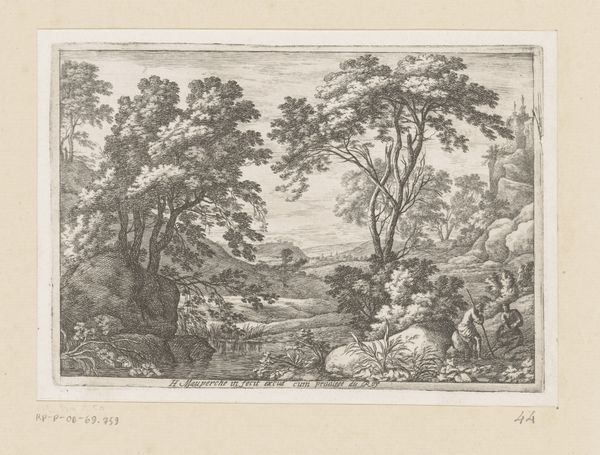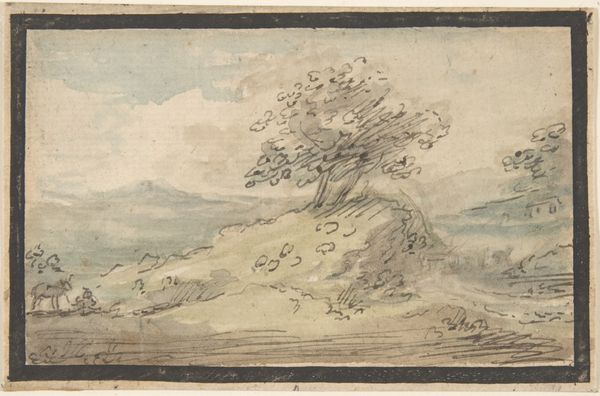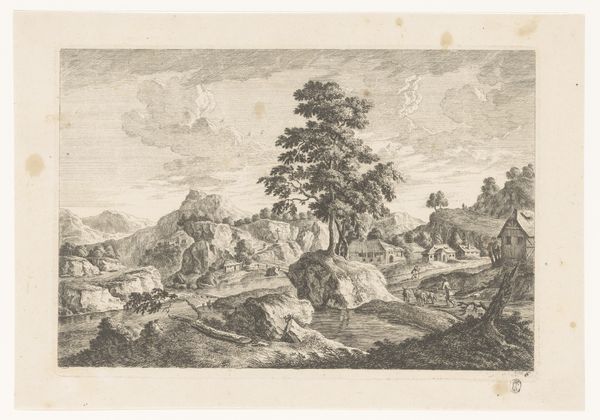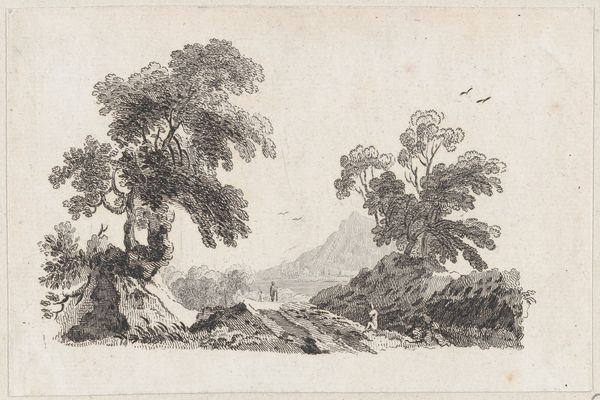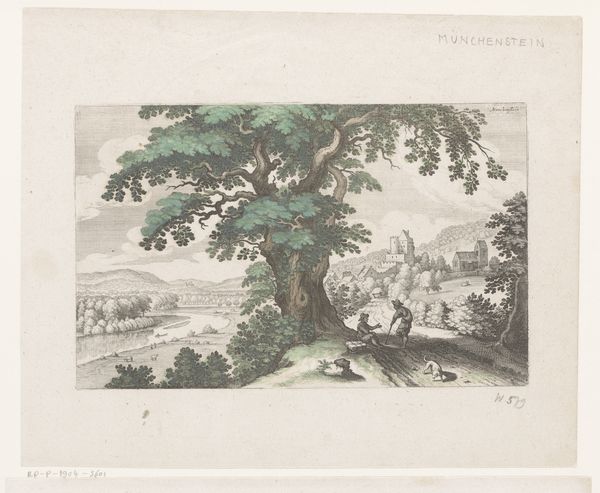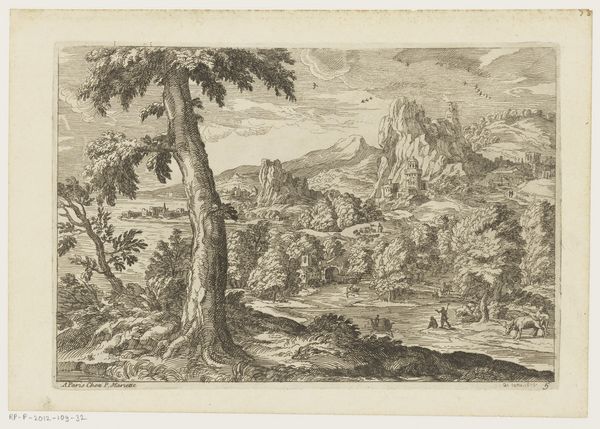
print, etching
#
baroque
# print
#
etching
#
landscape
#
etching
Dimensions: height 141 mm, width 232 mm
Copyright: Rijks Museum: Open Domain
Curator: The piece we're observing is entitled "Landscape with Man on Donkey," estimated to have been created between 1676 and 1700. It's an etching, currently held here at the Rijksmuseum. Editor: It's wonderfully composed, but the overwhelming feeling is one of… isolation. Despite the pastoral scene, there’s a somber mood created by the stark lines and the distant mountain looming. Curator: Yes, and etching as a medium allows for very precise, controlled lines. This would be a reproducible piece meant for wider circulation than a unique painting, hinting at a democratizing of landscape imagery. Think about the labor involved, though—the meticulous application of acid-resistant ground, the precise scoring, the biting. Editor: Precisely! And to whom was this image circulating? How did the representation of the landscape reinforce or challenge existing power structures? Was this landscape available and accessible to the common person or solely the domain of a privileged class who understood landscape as something that could be consumed as property? Curator: That’s a critical point. While it presents as a serene landscape, we have to acknowledge that such scenes often served to idealize or even obfuscate the realities of land ownership and resource extraction of the time. Editor: We see this lone figure on a donkey moving through the frame, are they simply a traveler, or are they positioned to evoke labor? The two figures on the hilltop are overseeing the pastoral domain below, the class divisions made overt through spatial positioning. Curator: Good observation. The inclusion of figures immediately suggests a narrative, placing human activity squarely within this specific rendering of nature. Editor: The details in the foliage contrast sharply with the blurry landscape beyond. This stylistic choice focuses the viewer’s attention, and perhaps tells us to focus on our actions and roles in the construction and maintenance of such imagery, while being blinded by the potential truths to its creation and display. Curator: Right, it makes you ponder the socio-economic processes through which land is conceptualized and, ultimately, consumed as an image. Editor: Exactly. The interplay of nature, human figures, and composition subtly communicates power relations of the period. Curator: Food for thought. Now it’s time for others to ponder on this interplay. Editor: An invitation to re-imagine our place within it all.
Comments
No comments
Be the first to comment and join the conversation on the ultimate creative platform.
